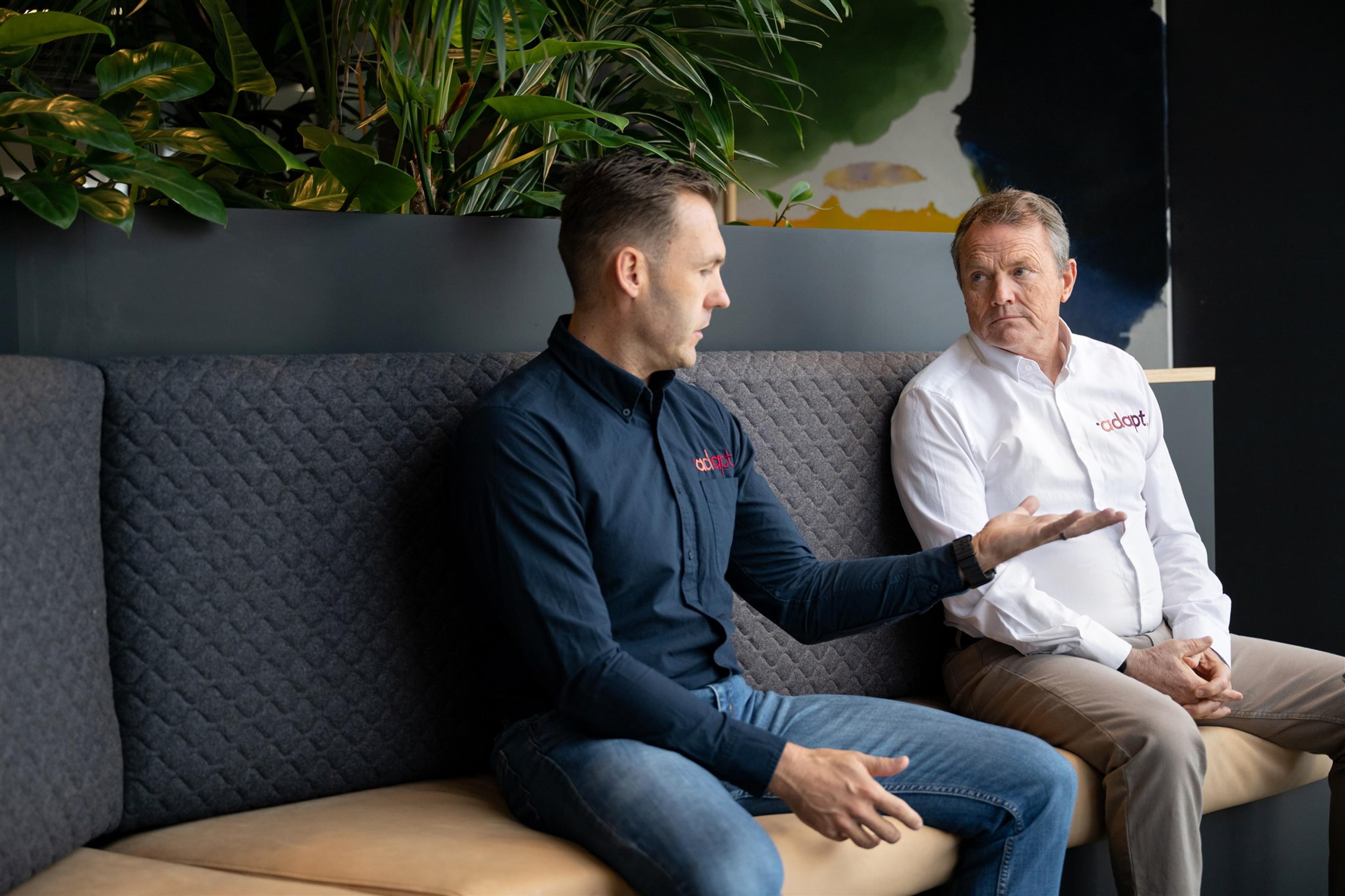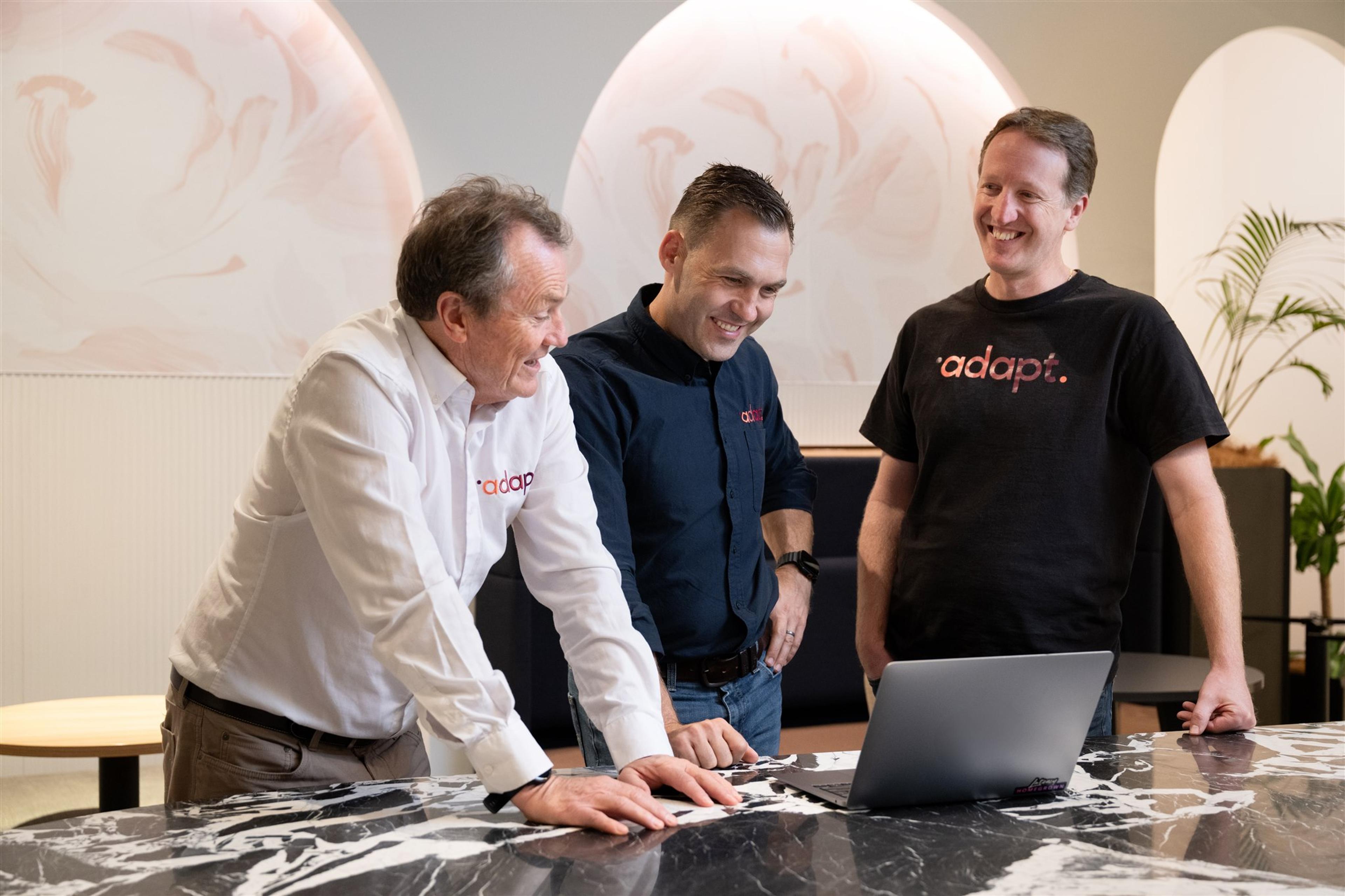Beyond Succession Planning

The SME Succession Crisis
Many SME owners believe that succession planning is something to consider only when they are ready to retire or exit the business. However, this traditional approach often leads to rushed transitions, leadership gaps, and companies that struggle—or even fail—once the founder steps away. The issue is not just poor execution but the flawed assumption that succession is a one-off event rather than an ongoing strategy.
The reality of traditional exit planning
Traditional exit planning typically involves:
- Finding a successor or buyer when the owner is ready to leave.
- Transferring leadership responsibilities over a short period.
- Selling the business without securing long-term stability.
This reactive approach fails to create business resilience because it does not prepare the company for long-term sustainability. Many SME owners are so deeply embedded in daily operations that when they decide to step back, there is no leadership pipeline, structured decision-making framework, or clear path to continued success.
What is Succession Thinking™?
Succession Thinking™ is a proactive, long-term approach to building a business that can succeed beyond the founder. Instead of waiting until an owner is ready to leave, succession thinking is integrated into daily business operations, keeping leadership, strategy, and culture strong, regardless of who is in charge.
Succession Thinking™ focuses on the following:
- Developing leaders early so the business does not rely on one person.
- Embedding a culture of decision-making autonomy to avoid bottlenecks.
- Systemising operations so processes continue smoothly even during leadership transitions.
This article explores why traditional exit planning often fails SME owners and how succession thinking provides a more effective, sustainable approach to long-term business resilience and value.
The Pitfalls of Traditional Exit Planning
Many SME owners assume that exit planning is something they can tackle when they are ready to retire or step away. However, this reactive approach often leads to rushed transitions, leadership gaps, and a significant drop in business valuation. When succession planning is left too late, owners struggle to find a capable successor, face operational disruptions and often sell for far less than their business is worth.
Unlike Succession Thinking™ which is embedded into a business’s long-term strategy, traditional exit planning is often treated as an event rather than an ongoing process. This short-term mindset creates major challenges when owners eventually decide to leave.
Why Exit Planning is Often Too Late
Many SME owners delay succession planning because they believe they will always have time to prepare when the moment comes. However, reality often forces business transitions sooner than expected, whether due to burnout, health issues, or market changes. Waiting until an owner is ready to leave usually results in rushed, last-minute planning, which can harm the business and leave the owner with fewer exit options.
Some of the most common problems with late-stage exit planning include:
- Rushed leadership transitions – Owners fail to find or properly train a successor in time, leading to instability.
- Reduced business valuation – A business heavily reliant on its founder loses value once that person steps away.
- Operational instability – Employees, customers, and suppliers experience uncertainty when leadership changes abruptly.
In many cases, owners remain in the business longer than planned because they realise they cannot step away without causing major disruption. Retirement is delayed, while stress, workload, and frustration increase as the owner struggles to transition from daily operations.
The risk of poor leadership transition
A poorly executed leadership transition is one of the biggest risks of traditional exit planning. Many owners assume that simply appointing a successor—whether a family member, senior employee, or external hire—will ensure business continuity. Without a structured leadership pipeline, the new leader often lacks the experience, knowledge, or cultural alignment to sustain the business effectively.
Common challenges with rushed leadership transitions include:
- A lack of institutional knowledge – Successors struggle to understand company history, processes, and decision-making structures.
- Cultural misalignment – New leadership may fail to uphold the company’s values, leading to internal resistance from employees.
- Inconsistent decision-making – Without prior leadership development, new leaders may make reactive or uninformed decisions that weaken the company’s position.
- Increased staff turnover – Employees may lose confidence in new leadership, leading to disengagement or resignations.
Without proper preparation and leadership development, the company faces a higher risk of internal conflict, operational mismanagement, and financial decline.
The Business Value Problem
For SME owners planning to sell their business, traditional exit planning often results in a much lower sale price than expected. A company that relies too heavily on its founder is considered a high-risk investment, making it less attractive to buyers and investors.
Why owner-dependent businesses struggle to sell for a high value:
- Buyers prefer self-sustaining businesses – Investors want companies with proven leadership teams and structured operations.
- Lack of documented processes lowers value – If critical business knowledge is not systemised, potential buyers will view the business as unstable.
- Revenue declines after owner departure – If the business relies on the founder’s relationships or expertise, there is no guarantee that success will continue post-sale.
This means that many SME owners, after years of hard work, struggle to secure a strong financial exit because their business was never built to operate independently.

The Need for Succession Thinking™
Instead of waiting until it’s time to exit, SME owners should adopt succession thinking, which ensures:
- A leadership pipeline is developed early to avoid last-minute transitions.
- Business operations are systemised to function without reliance on the owner.
- Long-term resilience and scalability are prioritised, making the business more valuable and investable.
By shifting from reactive exit planning to proactive succession thinking, SME owners can ensure a smooth transition, preserve business value, and gain the freedom to step away on their own terms.
Many SME owners struggle to step back from daily operations because their business relies too heavily on them for decision-making, strategy, and execution. This creates bottlenecks, slows growth, and reduces long-term value. Succession Thinking™ eliminates these risks by structuring the business for long-term resilience, leadership continuity, and operational efficiency—even when the owner is absent.
Unlike traditional exit planning, which is often reactive and event-driven, Succession Thinking™ proactively builds leadership, decision-making structures, and operational stability over time. By embedding Succession Thinking™ early, SME owners can create a self-sustaining company that thrives beyond them rather than waiting until an exit is imminent.
The Five Principles of Succession Thinking
At the heart of Succession Thinking™ are five key principles that help businesses become more resilient, scalable, and valuable. These principles eliminate owner dependency, strengthen leadership, and ensure long-term business sustainability.
Clear and strategic communication is essential during negotiations. Build trust and confidence by:
1. Seek role clarity
One of the biggest challenges in SMEs is the lack of role clarity, with the owner taking on multiple responsibilities—CEO, operations manager, sales lead, and strategist-creating bottlenecks and hindering leadership development.
How to Implement:
- Clearly define leadership, director, and operational roles to distribute decision-making.
- Create accountability structures to ensure employees understand their responsibilities.
- Develop an organisational chart that outlines leadership roles and decision-making authority.
By removing ambiguity and dependency, SMEs ensure their business can operate independently of the founder.
2. Build your Owner's vision
Many SMEs lack a long-term vision, leading to inconsistent decision-making and misalignment across teams. Without a clearly defined strategic direction, leadership transitions become uncertain, and business growth stalls.
How to Implement:
- Define a core business vision that aligns all decision-making and strategy.
- Communicate the vision and values across the organisation so employees work towards a shared goal.
- Regularly review and refine long-term goals to adapt to market changes.
A well-defined vision keeps leadership transitions and business growth aligned with strategic objectives, keeping the company stable even as ownership changes.
3. Build leadership beyond you
One of the biggest succession challenges SMEs face is the lack of leadership development. Many business owners assume they can find a successor when the time comes, but without leadership training, internal candidates may be unprepared, and external hires may lack cultural alignment.
How to Implement:
- Identify and train high-potential employees for leadership roles.
- Implement mentorship and coaching programs to transfer knowledge and decision-making skills.
- Encourage distributed leadership, where responsibility is shared across multiple leaders rather than concentrated in one person.
By investing in leadership early, SME owners can step back without disrupting business operations and ensure leadership transitions are smooth, not rushed.
4. Build culture beyond you
A business’s culture is one of its greatest assets, but many SMEs fail to embed their values into daily operations. When leadership changes, a weak or undefined culture can lead to disengagement, resistance, or operational misalignment.
How to Implement:
- Develop a values constitution that outlines company culture and expectations.
- Integrate culture-building into hiring, onboarding, and leadership training.
- Recognise and reward employees who uphold company values to strengthen cultural continuity.
A strong, values-driven culture maintains business stability, even when leadership transitions occur.
5. Build 'Your Business Way'
Businesses that lack documented processes and systems are highly vulnerable to operational disruptions when leadership changes. Without standardised workflows, transitions become chaotic, and business continuity is compromised.
How to Implement:
- Develop Standard Operating Procedures (SOPs) for key tasks and workflows.
- Implement decision-making frameworks to guide leaders in problem-solving.
- Use technology and automation to streamline operations and reduce reliance on individuals.
By systemising knowledge and decision-making, SMEs can scale more efficiently, reduce errors, and improve business stability.
Comparing Exit Planning & Succession Thinking™
Business owners looking to step away from daily operations or prepare for an eventual exit face two paths: traditional exit planning or succession thinking. While traditional exit planning is often reactive, focusing on finding a replacement when the owner is ready to leave, Succession Thinking™ takes a long-term approach, making sure leadership, decision-making, and business systems are built to sustain success beyond the founder.
The differences between these approaches become clear when examining real-world scenarios. Below are two contrasting examples—one where an SME relies on last-minute exit planning and another where a company implements Succession Thinking™ from the start.
Example 1: Traditional exit planning gone wrong
A successful business owner, John, has spent 30 years building his SME into a thriving company. He has always assumed that when the time comes, he will find the right successor and smoothly transition into retirement. However, he never took the time to develop leaders internally or document business processes, as he was too busy managing daily operations.
What Happens?
- At 65, John realises he needs to step back but has no leadership pipeline in place.
- He selects a successor—a long-time employee who understands the company but has never been in a leadership role.
- The new leader struggles with decision-making, team management, and strategic planning.
- Employees lose confidence in leadership, leading to high turnover and instability.
- The business begins to decline in profitability and efficiency.
- John, now frustrated and unable to find another solution, is forced to sell the business for far less than expected.
The Outcome:
John’s lack of proactive planning leads to:
- A rushed leadership transition that destabilises the company.
- A lower business valuation due to weak leadership and declining performance.
- A stressful, disappointing exit, where John receives far less than the company’s true value.
This scenario is common in SMEs that depend too heavily on the owner without developing leadership or systemising operations. The result is a struggling business and a difficult, often financially disappointing exit for the owner.
Example 2: Succession Thinking™ in Action
Unlike John, another business owner, Sarah, adopts Succession Thinking™ early in her SME. She understands that to ensure long-term stability, she needs to embed leadership development and business systemisation into her company from the start.
What she does differently:
- Early Leadership Development – Sarah identifies high-potential employees and provides mentorship and structured leadership training.
- Business Systemisation – She oversees processes, workflows, and decision-making frameworks to keep them well-documented and scalable.
- Gradual Transition – Over several years, Sarah delegates responsibilities to leadership teams, allowing them to take on more decision-making.
- Cultural Continuity – She builds a values-driven culture so leadership transitions do not disrupt business operations.
What happens?
- Sarah can step back gradually while the business continues to operate smoothly.
- The leadership team is prepared to handle daily decision-making, maintaining stability.
- The business maintains a strong valuation and investor confidence because it is not dependent on the owner.
When Sarah decides to exit, she has multiple options—selling at a high value, passing the business to internal leaders, or retaining an advisory role.
The outcome:
- A seamless leadership transition with no operational disruption.
- A higher business valuation is needed as investors recognise a well-structured, self-sustaining company.
- Greater flexibility for the owner, allowing her to step away on her own terms.
Sarah’s proactive Succession Thinking™ strategy results in a stress-free exit, a stable business, and a well-prepared leadership team ready to carry the company forward.
Key Takeaways: Why Succession Thinking™ Works
The contrast between John’s failed exit planning and Sarah’s successful succession thinking highlights the long-term benefits of proactive business planning.
1. Proactive planning ensures smoother transitions
When business owners prepare early, leadership transitions become gradual and seamless rather than rushed and disruptive.
2. A structured leadership pipeline builds stability
Investing in early leadership development prepares future leaders to take over, reducing risks and preventing instability.
3. Systemised businesses retain value and continuity
Companies that document processes, systemise decision-making, and create cultural consistency can transition leadership without losing business momentum or valuation.
Traditional exit planning leaves SME owners vulnerable, while succession thinking empowers them to step back or sell on their own terms, keeping the business resilient, valuable and future-ready.
How to Implement Succession Thinking™ in Your SME
Succession Thinking™ goes beyond preparing for an exit—it’s about creating a business that can run independently of the owner while remaining resilient and valuable over time. Succession Thinking™ requires a proactive, structured approach that keeps leadership, culture, and operations running smoothly, regardless of ownership changes.
Below are four key steps to embed Succession Thinking™ into your SME, helping to build long-term sustainability and scalability.
Step 1: Define Your Business Way
Every business has unique processes, methodologies, and operational frameworks that contribute to its success. Many SMEs fail to document these, leading to inefficiencies and uncertainty when leadership transitions occur. Without a clearly defined “Business Way”, knowledge remains locked inside the owner’s mind, making the business heavily dependent on their presence.
How to implement:
- Identify core business processes – Determine the systems, workflows, and strategies that drive your company’s success.
- Document workflows & SOPs – Create Standard Operating Procedures (SOPs) for every major function, from sales and finance to HR and customer service.
- Establish decision-making structures – Define responsibilities clearly, ensuring leadership accountability is mapped out.
By defining and documenting these elements, businesses can scale more easily, reduce inefficiencies, and ensure operational consistency, even when leadership changes.
Step 2: Create a leadership pipeline
Many SMEs struggle with leadership transitions because they have no structured leadership development plan. Business owners often assume they can simply appoint a successor when the time comes. Without internal leadership development, these transitions frequently fail, leading to uncertainty and business decline.
How to implement:
- Identify future leaders early – Look for employees with leadership potential, strategic thinking skills, and alignment with the company’s values.
- Provide mentorship & structured training – Develop a leadership development program that includes coaching, hands-on experience, and gradual responsibility shifts.
- Empower leaders to make decisions – Encourage team members to take ownership of key business areas, reducing dependency on the owner.
By building a leadership pipeline, SMEs ensure seamless leadership transitions, with internal candidates ready to take over key responsibilities. This reduces risk and makes the business more valuable and resilient.
Step 3: Align culture with long-term goals
A company’s culture and values are just as important as its operations. If culture is not embedded into daily practices, leadership transitions can lead to misalignment, loss of employee engagement, and operational instability.
How to implement:
- Define core values & long-term vision – Ensure the company’s mission, vision, and values are clear and shared across all levels of leadership.
- Train new leaders to uphold culture – Leadership succession is not just about skills—it’s about continuing the company’s philosophy and strategic direction.
- Integrate values into daily operations – Reinforce the company’s cultural identity by aligning decision-making, hiring, and performance management with core values.
When culture is strong and embedded into the organisation, business transitions become smoother and less disruptive, supporting long-term stability.
Step 4: Review and adapt over time
Succession planning is not a one-time event—it’s an ongoing process that must be regularly assessed, refined, and adapted based on business needs, market conditions, and leadership development. A company that fails to update its succession strategies over time, risks becoming outdated and more vulnerable to unexpected disruptions.
How to implement:
- Regularly reassess leadership structures – Evaluate whether the current leadership pipeline and decision-making processes align with business growth.
- Monitor business systems for efficiency – Ensure workflows and SOPs remain effective, scalable, and relevant to industry changes.
- Adapt to market shifts & growth opportunities – Stay ahead of market trends, equipping leadership to handle new challenges.
By continuously reviewing and refining succession planning strategies, SMEs can remain resilient, adaptable, and well-positioned for future growth.
The Business Benefits of Succession Thinking™
Succession Thinking™ focuses on preparing for an exit while also creating an independent, resilient, and valuable business over the long term. SME owners who embed leadership development, operational systems, and cultural continuity into their business reduce risk, increase valuation, and gain greater freedom.
The benefits of Succession Thinking™ extend across financial, operational, and personal areas, helping the business and its owner achieve long-term success.
1. Stronger business valuation
A business that can operate independently of its owner is significantly more attractive to investors, buyers, and strategic partners. Businesses that rely too heavily on their founder often struggle to secure high sale prices or attract external investment, as potential buyers see greater risk and instability.
How Succession Thinking™ increases business valuation:
- Leadership independence – A company with a structured leadership pipeline is more stable and scalable, making it a lower-risk investment.
- Operational efficiency – Well-documented processes and decision-making frameworks ensure business continuity, even when leadership changes.
- Higher buyer confidence – Investors and buyers look for businesses that can thrive beyond their founder, increasing the likelihood of a successful sale or transition.
By embedding Succession Thinking™, SME owners preserve and grow business value while keeping future exit options open.
2. Greater leadership stability
A business that can operate independently of its owner is significantly more attractive to investors, buyers, and strategic partners. Businesses that rely too heavily on their founder often struggle to secure high sale prices or attract external investment, as potential buyers see greater risk and instability.
How Succession Thinking™ ensures leadership stability:
- Proactive leadership development – Instead of waiting until a transition is imminent, SMEs can train leaders gradually and prepare them for higher responsibilities.
- Defined leadership roles – Structuring leadership teams before they are needed helps businesses avoid last-minute decision-making during transitions.
- Cultural continuity – Future leaders are already aligned with company values and vision, reducing the risk of misalignment or internal resistance.
Businesses that fail to implement leadership succession often experience instability, reduced performance, and high employee turnover when key leaders leave. In contrast, Succession Thinking™ supports a seamless transition and long-term strategic growth.
3. Personal freedom for the owner
One of the biggest challenges for SME owners is feeling trapped in daily operations. Many find it hard to step back because the business depends on their involvement, causing burnout, stress, and an inability to focus on long-term strategy.
How Succession Thinking™ gives owners more freedom:
- Reduced reliance on the owner – Leadership delegation allows daily decision-making to move forward without always requiring the owner’s approval.
- Flexibility to step back – SME owners can take time off or explore new opportunities without business disruptions.
- Less stress, more strategic focus – Instead of firefighting daily issues, business owners can focus on innovation, expansion, or personal goals.
Succession Thinking™ frees business owners from the constant demands of running an SME, allowing them to choose how and when they step back rather than being forced into a rushed exit.
4. A lasting legacy
Many business owners do not just want financial success—they want to leave behind a thriving, sustainable business that continues to grow. A company that relies entirely on its founder often struggles or fails after their departure, whereas a well-prepared business sustains long-term success.
How Succession Thinking™ helps build a lasting legacy
- Sustaining the business thrives beyond the founder – A structured company does not collapse or lose momentum when leadership changes.
- Provides long-term security for employees and stakeholders – Employees, customers, and investors have confidence in the future of the business.
- Strengthens brand reputation and industry presence – A business that can sustain leadership transitions builds a stronger market position and long-term credibility.
Succession Thinking™ allows SME owners to step away on their terms, knowing they have built something valuable and enduring—rather than leaving behind a company that struggles without them.
Conclusion
For many SME owners, traditional exit planning is the logical approach to preparing for the future. This reactive strategy often leads to rushed transitions, leadership gaps, and reduced business valuation. By waiting until they are ready to leave, owners find themselves vulnerable—forced to make last-minute decisions that can harm the business’s long-term success.
Succession Thinking™ is the alternative. Instead of treating succession as a single event, it is a structured, ongoing approach that builds business resilience, leadership continuity, and lasting value. Rather than focusing solely on an eventual sale or transition, Succession Thinking™ embeds leadership development, cultural alignment, and systemised processes into daily operations, keeping the business strong, scalable, and valuable at all times.
By implementing Succession Thinking™, SME owners can:
- Step back from daily operations with confidence, knowing their business is in capable hands.
- Ensure smooth leadership transitions with a well-prepared leadership pipeline.
- Increase business valuation by making their company more attractive to investors and buyers.
- Build a lasting legacy, allowing their business to succeed beyond their direct involvement.
Take action now
Succession Thinking™ is not something to start when an exit is imminent—it is a strategy that should be embedded into your business today. The earlier SME owners begin implementing Succession Thinking™, the stronger and more valuable their company becomes.
Explore adapt's succession strategy services to discover how to future-proof your business and build a company that thrives beyond you.
Future-proof your business and take control of your company’s long-term success today.



